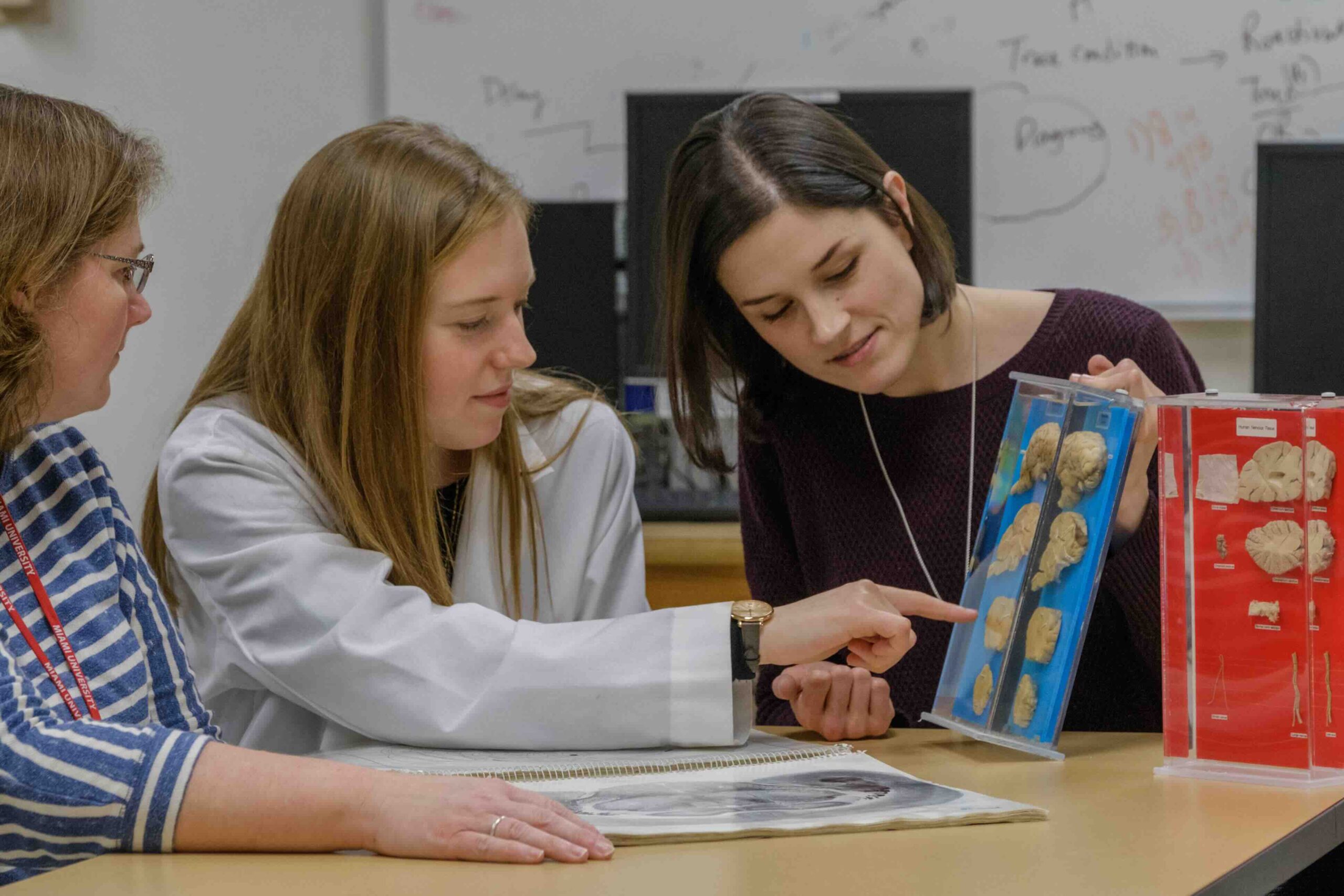Write all of the introduction content here. Only use NON
FULL-WIDTH block.
Full-Width blocks can be inserted
outside of this block and will wrap around the form. Form settings are located on page settings
(click
“Program” for page
settings in
right-hand sidebar.)
Write your contact information here and insert your embed form code in the Custom HTML block below
Delve Into the Nervous System
The Neuroscience Co-Major examines nerve cells, how they’re organized into a functional nervous system, and the role of this system in behavior and cognition.
Coursework draws from biology, chemistry, psychology, and statistics. You’ll complete this program in conjunction with a primary major.
ABOUT NEUROSCIENCE:
Neuroscience is a rapidly advancing, interdisciplinary field with relevance to all aspects of our everyday lives. As a highly interdisciplinary field, neuroscience requires an in-depth study of the nervous system at multiple levels of analysis—including molecular, genetic, cellular, and systems levels.
The interdepartmental Neuroscience Co-major offers students the opportunity to pursue an in-depth exploration of the biology of individual nerve cells organization of nerve cells into a functional nervous system and the role of the nervous system in behavior and cognition.
The co-major is multidisciplinary, including coursework in biology, psychology, chemistry and statistics. It provides a basic framework for students planning advanced work at the graduate level. This curriculum will ensure a strong foundation in neuroscience along with a methodological and statistical mastery (one year of statistics) that is often lacking in neuroscience education at the undergraduate level. Students in the co-major must also be enrolled in, and complete, a primary major; the co-major cannot be taken as a stand-alone major.
Curriculum and Courses
Neuroscience combines with any other major to provide comprehensive training in the biology of individual nerve cells, the organization of cells into a functional nervous system, and the role of the nervous system in behavior and cognition. Core courses include introductory biology, cell biology, biopsychology, and physiology. In addition to a year of chemistry and statistics, advanced neuroscience courses in biology and psychology are taken.
Neuroscience is a co-major, a primary major is required.
Program Requirements
At Miami, there is something for everyone.
- Foundational coursework in Biology, Psychology, and Chemistry (BIO 116, BIO 203, BIO 305, PSY 251, and CHM 141/142)
- Professional and career development (BIO/PSY 159)
- Training in data and statistics (PSY 294 or STA 363)
- Advanced coursework in neuroscience (e.g., PSY 356 Psychopharmacology, PSY 451 Cognitive Neuroscience, PSY 456 Advanced Biological Bases of Behavior, BIO 452 Neuromodulation, BIO 454 Endocrinology, BIO 469 Neurophysiology)
Research Opportunities
All neuroscience students are encouraged to supplement their classroom instruction with hands-on training in neuroscience research. Because neuroscience is an interdisciplinary field, research opportunities are available in labs throughout the university.
- Independent study in neuroscience is available from the first year at Miami.
- Faculty-led research labs are available in all areas of neuroscience, including development, cognition, behavior, emotion, and the neurobiology of disease.
- Undergraduate students frequently present at national scientific meetings and publish their findings in relevant scientific journals.
- Course-based research experiences are integrated directly into the curriculum.
Careers in Neuroscience
Brain-based disorders and diseases are a significant societal burden, and the demand for workers with expertise in neuroscience continues to grow. Training in neuroscience can lead to job opportunities in many fields.
Facts and Stats
Your college experience here will be one of the most exciting times of your life. To make sure of this, we’ll provide you with a powerful support system.
First-to-second year retention
Miami University Data
Among Public Universities in the United States for Four-Year Graduation Rate
The Chronicle of Higher Education Almanac
of 2018-2019 graduates who were employed or furthering their education by fall 2019
Miami University Data


